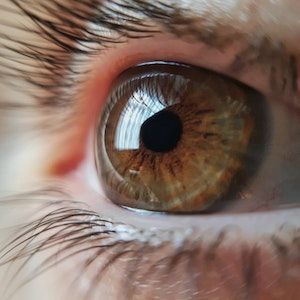Article
Modifiable Risk Factors for Diabetic Retinopathy Associated with Retinal Sensitivity
Author(s):
Early-stage prevention of modifiable risk factors may contribute to the prevention of neurodegenerative changes and diabetic retinopathy.

New findings suggest early-stage prevention of modifiable risk factors may contribute to the prevention of neurodegenerative changes, including loss of retinal sensitivity, which are often markers of diabetic retinopathy (DR).
Risk factors including higher levels of glycemia or systolic blood pressure, lower adherence to a healthy diet, or cardiorespiratory fitness, and smoking were associated with a lower retinal sensitivity.
“Early prevention of neurodegeneration (e.g. already in those with prediabetes/obesity) via risk factors may contribute to the early prevention of DR,” wrote study author Sara Mokhtar, MSc, Universiteit Maastricht Cardiovascular Research Institute Maastricht.
These findings were presented at the Association for Research in Vision and Ophthalmology (ARVO) 2022 Meeting in Denver, Colorado.
Although DR is preceded by functional neurodegenerative changes, including reduced light sensitivity, it is still unknown whether potentially modifiable risk factors are determinants of retinal sensitivity.
Investigators used cross-sectional data from the Maastricht study to determine if those risk factors are associated with retinal sensitivity. It included up to 5,255 participants, with 50.5% men, an average age of 59.7±8.7 years, and 22.6% had type 2 diabetes (T2D).
Factors including HbA2c (mmol/mol) and total cholesterol (mmol/L) were determined through fasting plasma samples, while investigators assessed dietary intake, alcohol consumption, and smoking status via a questionnaire.
The team additionally measured cardiorespiratory fitness, 24-hour ambulatory blood pressure (mm Hg), waist circumference (cm), and physical activity (hours per day).
They estimated the retinal sensitivity using Heidelberg Edge Perimeter and thus defined it as the mean perimacular retinal sensitivity of both eyes. Linear regression analyses were used with adjustment for potential confounders and tested for interaction by sex and T2D.
Following full adjustment, investigators observed greater HbA1c (SD-β, -0.05; 95% CI, -0.08 to -0.02), lower healthy diet score (SD-β, -0.06; 95% CI, -0.09 to -0.03), cardiorespiratory fitness (SD-β, -0.05; 95% CI, -0.08 to -0.01), and current versus never smoking (SD-β, -0.14; 95% CI, -0.22 to -0.06) were significantly associated with lower retinal sensitivity.
Moreover, a greater 24-hour ambulatory systolic blood pressure had significant associations with lower retinal sensitivity in individuals with T2D, but not in indvisiaulys without (SD-β, -0.06; 95% CI, -0.12 to -0.04).
By contrast, the investigators observed greater total cholesterol was significantly associated with greater retinal sensitivity (SD-β 0.05; 95% CI, 0.02 - 0.08).
“Alcohol consumption, antihypertensive medication use, lower physical activity, and greater waist circumference were not associated with RS,” Mokhtar concluded. “Sex did not modify the associations.”
The study, “A higher level of glycemia, lower adherence to a healthy diet, lower cardiorespiratory fitness, smoking, and higher systolic blood pressure are cross-sectionally associated with lower retinal sensitivity in a population-based study – The Maastricht Study,” was presented at ARVO 2022.




